How to ride on the footpath
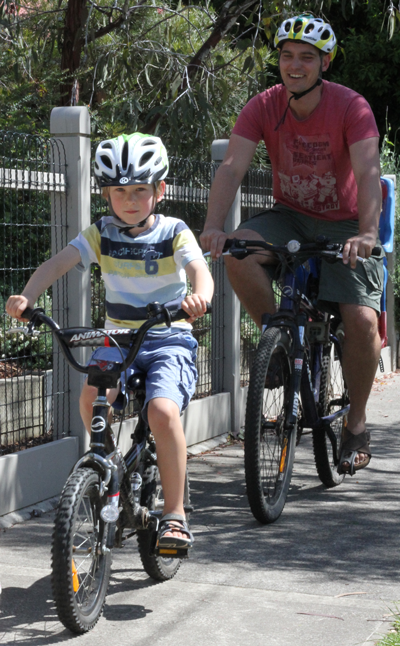
The footpath has its own special set of hazards to be aware of and to anticipate. With a bit of practice, scanning and preparing for these become second nature. Simon Vincett explains.
Riding on the footpath is an art in itself. It’s still not allowed for adults in three Australian states but for kids under 12 anywhere in Australia, and for adults accompanying them, it is the best option in safely avoiding motor vehicle traffic.
In Queensland, Tasmania, the Australian Capital Territory, the Northern Territory—and now, as of October 2015, in South Australia—anyone can ride on the footpath. Many riders in these states and territories value the option for riders to leave narrow and busy roads and make their way on the lower risk environment of the footpath. Ride On has investigated this previously: rideonmagazine.com.au/teens-in-traffic
In May 2015, Western Australia’s Barnett Government flagged that it is looking at allowing footpath riding as well. However, it currently remains illegal, as it is in Victoria and New South Wales. In these states only kids under 12, and adults accompanying them, can ride on the footpath.
Parents should take advantage of this right—although the footpath may seem slow going and strewn with obstacles—it is actually kid-friendly and a useful, buffered zone in which to learn and practice the skills of riding in traffic.
the footpath is … a useful, buffered zone in which to learn and practice the skills of riding in traffic
Everyone riding on the footpath must give way to pedestrians. Riders must slow down and also give plenty of warning by ringing their bell or calling out “passing” when doing so. This is particularly important for pedestrians ahead, travelling in the same direction, because with their back turned they won’t see you and can be easily startled.
Ben Rossiter of Victoria Walks, points out that the threat of a collision with a bike rider is very scary for pedestrians, particularly for senior citizens.
“Seniors are overwhelmingly concerned with not falling. Things which surprise them are a real concern. With hearing and vision dropping, they won’t see a bike coming. Their concern is a bike whizzing behind them, not ringing the bell. That is more of a barrier than actual collision. The perceptions are really critical for seniors.”
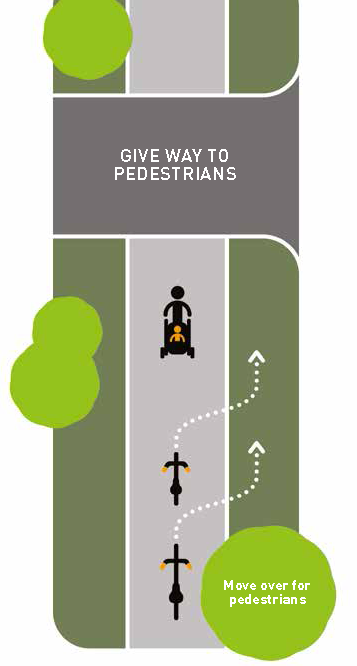
Cars backing out of driveways are a significant danger for footpath riders. The solution is to scan ahead constantly and where vehicles may be emerging, it is prudent so slow right down. Ring your bell to alert drivers that a bike is coming through.
Crossing side streets is the other risky situation for riders on footpaths. You need to assume that drivers are not expecting a bike, so you need to slow down, scan carefully and be ready to give way to turning vehicles. Even if you have been seen, the motorist may not be aware that they must give way to bike riders crossing, just as they would to pedestrians. With this in mind, be prepared to give way just in case.
Riding footpaths with kids
The footpath is an ideal training ground for young road users when adopting some strategies to make the most of the experience.
First, talk through what to do and lay down the ground rules: “Stop when I say so”; “Stop at road crossings and get off the bike”; “Don’t go until I say so”; “Move onto the grass when someone is coming or when I say so”.
Ride behind them rather than in front. That way you can monitor how they go and you can call out guidance as required. Ride as close as you can so you can easily talk about what you’re doing, explaining why and what to do next.
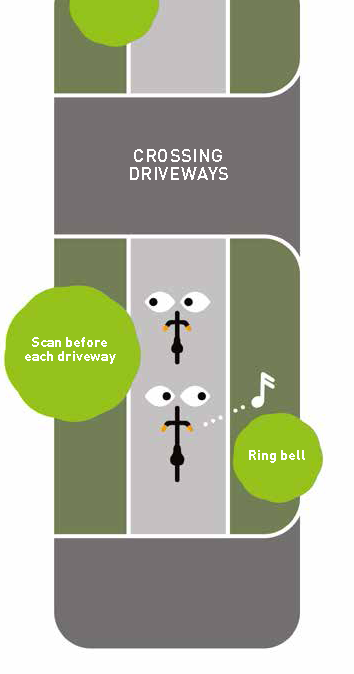
Don’t try to hurry them along. There’s a lot to take in and their skills, reactions and braking ability are still developing. Also, you will need plenty of time to slow down with cars backing out of driveways and stopping for road crossings. Before too long, you will have to tell them, “Slow down—you have to be ready to stop when you’re on the footpath.”
As you go, deliver a lesson in how to ride: “Scan driveways for cars coming out”; “Here comes a road crossing—get ready to stop”; “Look left and right before we cross the road. OK, let’s cross”; “Move now onto the grass to pass around this lady”.
Start practicing riding on the road with your kids from age 10, because—depending on state—they may need to be off the footpath by the time of their 12th birthday.
Scan the driveways ahead and if you see a car emerging, ring your bell. In the event you can’t see if car is emerging or not, best to ring your bell anyway. The kids will probably enjoy it and ring their bells all down the street, which can only help.
Instruct the kids to move onto the grass to pass pedestrians and call out “passing” before you overtake a pedestrian going in your same direction.
Kids should always treat road crossings as a ‘stop’ situation. They don’t have the cognitive capability to judge speed and track traffic coming from different directions to treat road crossings as a ‘give way’ situation.
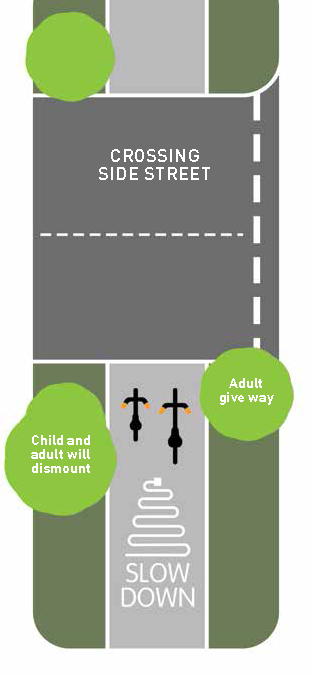
They should also dismount at road crossings—it’s too easy for kids to mistakenly move into the intersection if they stay on their bike. After about six months of practice though, you can test them on their scanning and judgement and try staying mounted at a crossing.
Start practicing riding on the road with your kids from age 10, because—depending on state—they may need to be off the footpath by the time of their 12th birthday.
Bicycle Network is campaigning to have the legal age for riding on footpaths raised to 16 Australia-wide.
Ride On content is editorially independent, but is supported financially by members of Bicycle Network. If you enjoy our articles and want to support the future publication of high-quality content, please consider helping out by becoming a member.



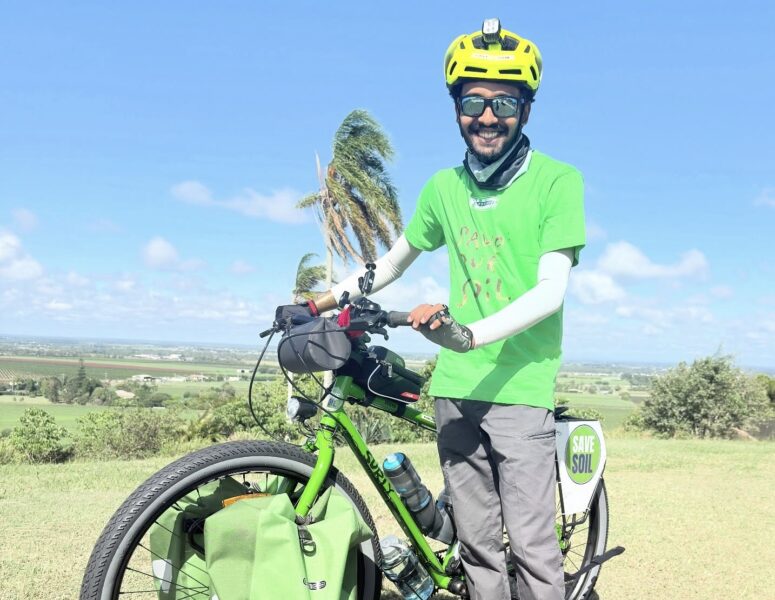



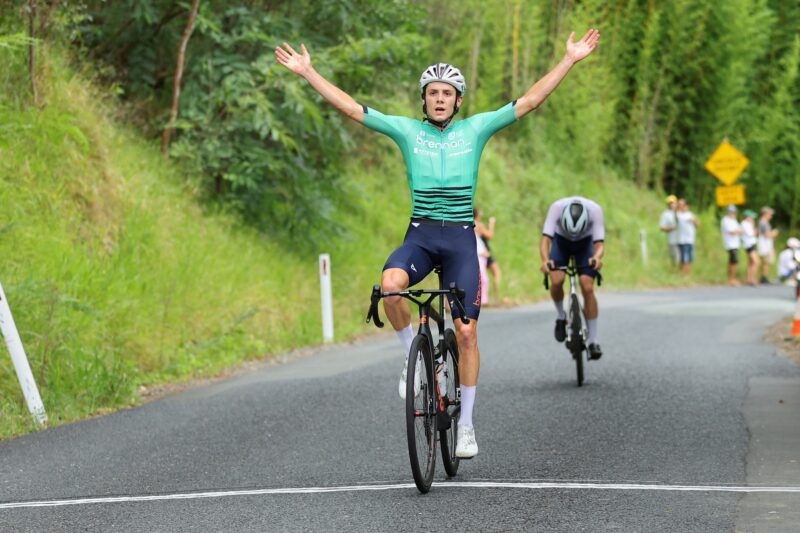
Not bad, but some of this advice is completely devoid of reality.
There is NO point ringing your bell when crossing driveways. Asides from having to ring every half- second, it won’t do a thing as most driver cannot hear it over their insulation and engine noise, let alone any music/phone/passengers gabbling in their ear. Now if you had an air-raid siren attached to your transmission…
Just keep your eyes peed and your speed low. Eye every car in a driveway coming up to see if it has reversing lights on, look into the car to see if there is a driver, and most importantly, they are _looking at you_ and pressing the brake, not the accelerator.
If you want to go faster than that, get off the footpath and get on the road where you will have better sight lines and more time to evade if necessary.
‘Giving way’ to pedestrians by swerving randomly to the right as shown is a good way to cause an accident (either into someone coming behind them, or someone faster behind trying to overtake you). Simply keep left, just like you would do so on a road. The pedestrian will also keep left if they have any sense, allowing you both to pass , just like you would normally on the road. If you cannot get past, then stop until they walk pass. It won’t kill you, honest. You might need to clip in again though “the horror!”
That said, sometimes you need to break rules, in that case, check your rear before veering off, allow adequate clearance and keep your moves slow and predictable so the peds don’t panic and dive in front of you (yes, I have seen this, more than once).
By making your acceleration and turns smooth and gentle, that reassures the peds you’re not a freak scofflaw hell-bent on grinding the faces of them and all their grandchildren into the pavement. It also gives their glacial mental processing a chance to keep up.
Sharing the footpath is the same as sharing the road, except that we cyclists are in the place of the drivers, being faster and more likely to damage other users. It’s up to us to be responsible and look out for them, because few of them will look out for themselves.
Where in the road rules does it say ‘..the motorist may not be aware that they must give way to bike riders crossing, just as they would to pedestrians.’ ???
I’ve never seen this before….
Australian road rule 72 “Giving way at an intersection (except a T–intersection or roundabout)” says drivers turning must give way to “any pedestrian at or near the intersection who is
crossing the road the driver is entering.” The equivalent will be found in the Giving Way section of the road rules of your specific state and territory.